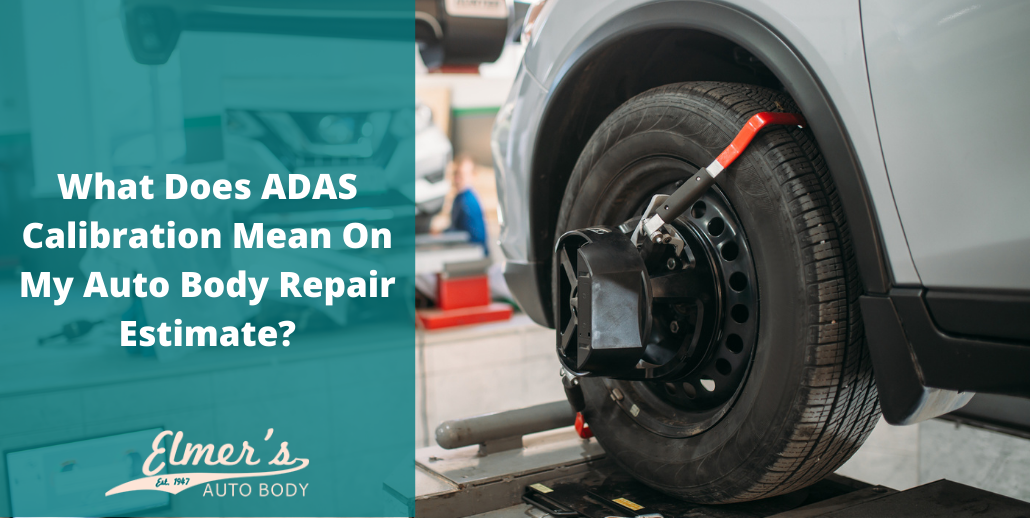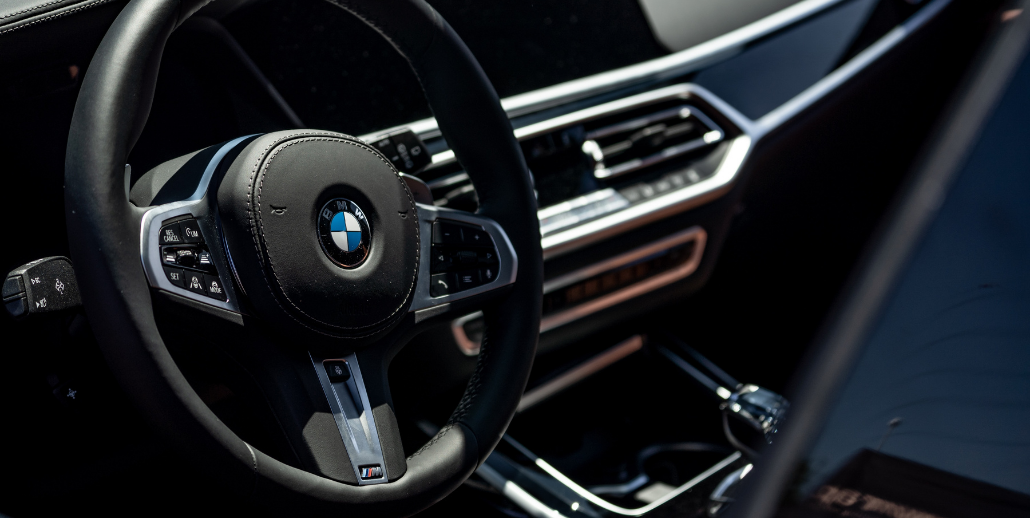Reading over your estimate from the auto body repair shop and wondering what in the world “ADAS calibration” means? You’re not the only one. ADAS calibration is not just some fancy lingo meant to increase the price of your repairs. Elmer’s Auto Body believes that, by demystifying repair procedures and steps, we can better serve our customers. That is why we are going to tell you everything you need to know about ADAS calibration, including what it means, why it is necessary, and what you can expect when it is done.
Let’s get started.
What is ADAS?
ADAS is short for “,” all of which are technologies incorporated into your vehicle that make it safer to drive. ADAS utilizes what is called a “human-machine interface” to improve your ability to react to whatever arises on the road, from dodging accidents to stopping on a dime. Most systems come standard in many modern-day vehicles, but there are aftermarket features that can be added to personalize your experience.
Some common ADAS technologies include:
- Adaptive cruise control
- Forward collision warnings
- Anti-lock brakes
- High beam safety system
- Lane departure warnings
- Traction control
- Blindspot detection
How do ADAS work?
Most ADAS are controlled by a number of computer sensors placed throughout the vehicle. They also have multiple ways to receive data, including automotive imaging and LiDAR (light detection and ranging). This allows sensors to be able to survey a full 360-degree area, regardless of the weather conditions or visibility. Data can also be processed through things like vehicle-to-infrastructure (V2X), WiFi, and other vehicles (V2V).
These systems are meant to decrease human error since the majority of road accidents are caused by the mistakes people make. ADAS improves driving ability overall, reduces the number of deaths, and improves awareness. However, like all technologies, ADAS can malfunction over time and need to be maintained and re-calibrated, especially after damages or accidents.
What is ADAS Calibration?
The states that ADAS calibration is “a process carried out to correctly align the cameras and sensors of a car so that its ADAS system can work as intended.” Such calibration can only be done using specialized tools that are wielded by trained technicians who have experience dealing with such systems. Every sensor has to be precisely positioned. Otherwise, the systems will fail.
ADAS calibration is not something you can easily neglect. Even if the position of the cameras and sensors are off by a hair, there is a significant influence on the effectiveness of the entire system. In other words, the sensors could end up focusing elsewhere, jeopardizing your safety—and the safety of every other person on the road.
Failing to re-calibrate your ADAS can cause other issues, including:
- Steering wheel vibration
- Harder steering
- Steering wheel pull
- Diagnostic trouble codes (DTC) stored in the system computer
When Does ADAS Need to be Calibrated?
Calibration is needed whenever the sensors of a vehicle have been disrupted. Fender benders, collisions, airbag deployment, or even mistakes made during maintenance can upset an ADAS. Some ADAS sensors can be affected by things like wheel alignment, suspension repairs, tire size changes, car roof repair, and windshield replacement. Calibration must also be done whenever a sensor or the mounting bracket is repaired.
How is an ADAS Re-calibrated?
As mentioned earlier, when an ADAS is displaced or damaged in an accident, you will need to have it re-calibrated. Usually, this requires a trip to the dealership, since every manufacturer is going to have their own measures for ADAS calibration. Generally, sensors are aimed at targets while the technician works to scan the ADAS through your vehicle’s OBD port. The process is time-consuming, and if full attention is not given, the entirety of your car’s ADAS can be decreased.
Because many auto body shops cover a broad range of auto makes and models, it is best to let a specialized dealership or auto body shop do the ADAS calibration. The vehicle will be returned to the auto repair shop once the calibration is complete so any further work can be finished.
Therefore, if you receive an estimate that has “ADAS Calibration” written on it, it is most likely because the technician or mechanic is assuming that the sensors have been disrupted for some reason (or simply want to double-check for safety purposes).
Who in New Jersey Can Perform an ADAS Calibration?
Looking for an “auto body shop near me” in New Jersey with knowledge about ADAS and ADAS re-calibration? Elmer’s Auto Body has a long history in auto repairs, and we have seen ADAS technology evolve throughout the years. Furthermore, we know that ADAS calibration takes time, the proper equipment, and highly specialized knowledge to complete. Each of our technicians has been trained for OEM parts, and our shop has I-CAR certification. You can trust our mechanics to have the highest level of training and skill.
Learn more about our services by giving us a call. You can also fill out the contact form to schedule a consultation or to receive a quote. We are more than happy to answer whatever questions you have.



